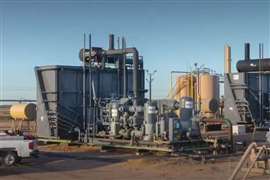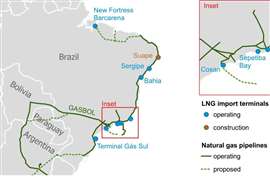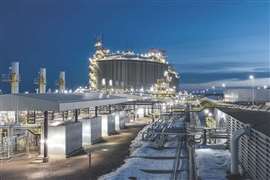Read this article in Français Deutsch Italiano Português Español
IEA: Natural gas demand to slow considerably
October 10, 2023
Global LNG capacity is expected to expand by 25% between 2022 and 2026
 After peak in mature markets, global gas demand is set for slower growth in coming years, according to a new report from the International Energy Agency (IEA). (Image: IEA)
After peak in mature markets, global gas demand is set for slower growth in coming years, according to a new report from the International Energy Agency (IEA). (Image: IEA)
Growth in global demand for natural gas is expected to slow in the coming years as consumption declines in mature markets, according to the International Energy Agency’s (IEA) latest medium-term forecast.
Global gas demand is on course to grow by an average on 1.6% a year between 2022 and 2026, down from an average of 2.5% a year between 2017 and 2021, says the Gas 2023 Medium-Term Market Report. The report notes that the advent of the global energy crisis in 2022, triggered by Russia’s invasion of Ukraine, has ushered in a different era for global gas markets after their decade of strong growth between 2011 and 2021.
“Overall gas demand from mature markets in Asia Pacific, Europe and North America peaked in 2021, and is forecast to decline by 1% annually through to 2026,” the report states. “An accelerated rollout of renewables and improved energy efficiency are among the key drivers behind the downward trend for natural gas in these markets. For Europe, the loss of piped gas from Russia, following its invasion of Ukraine, pressed governments to seek alternative solutions to maintain energy security.”
Decreasing demand in mature markets across the world – a collection of countries that represent almost half of global gas consumption – means that growth will be highly concentrated in fast-growing Asian markets as well as some gas-rich economies in the Middle East and Africa. China alone is expected to account for almost half of the total growth in global gas demand between 2022 and 2026, drawing on the fuel to serve its industrial production, power sector and urban areas.
An increase in the amount of new liquefied natural gas (LNG) capacity coming online is expected to affect market dynamics in 2025 and 2026 by easing some of the tightness and unlocking price-sensitive demand, the report states.
“Global LNG capacity is expected to expand by 25% between 2022 and 2026, with the United States consolidating its position as the world’s largest LNG exporter through the construction of new liquefaction plants,” according to the IEA. “Growth in LNG supply signals a shift to a more globalized gas marketplace, which will improve resiliency and the ability of suppliers and consumers to respond to supply and demand shocks.”
“After their heyday between 2011 and 2021, the world’s gas markets have entered a new and more uncertain period that is likely to be characterized by slower growth and higher volatility – and could lead to a peak in global demand by the end of this decade,” said Keisuke Sadamori, IEA Director of Energy Markets and Security. “Different trends are playing out across different regions, with demand declining in mature markets but continuing to grow in emerging and developing economies. We expect a substantial increase in new LNG capacity coming online in the years ahead, which should ease some of the tightness and security of supply concerns that markets have been experiencing since Russia started withholding supplies in 2021.”
MAGAZINE
NEWSLETTER

CONNECT WITH THE TEAM









